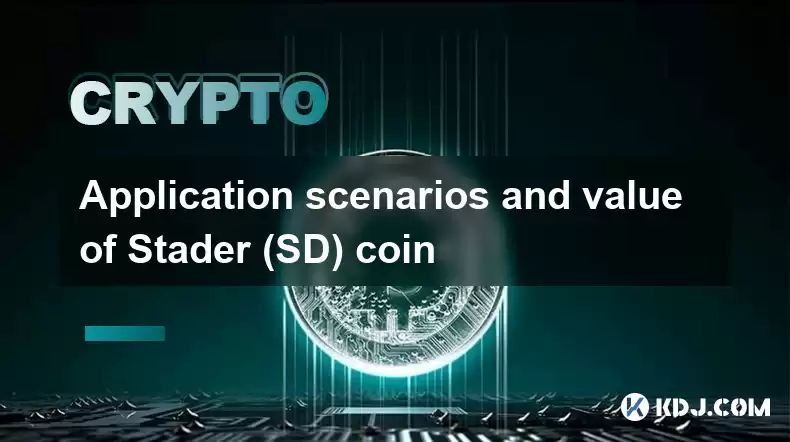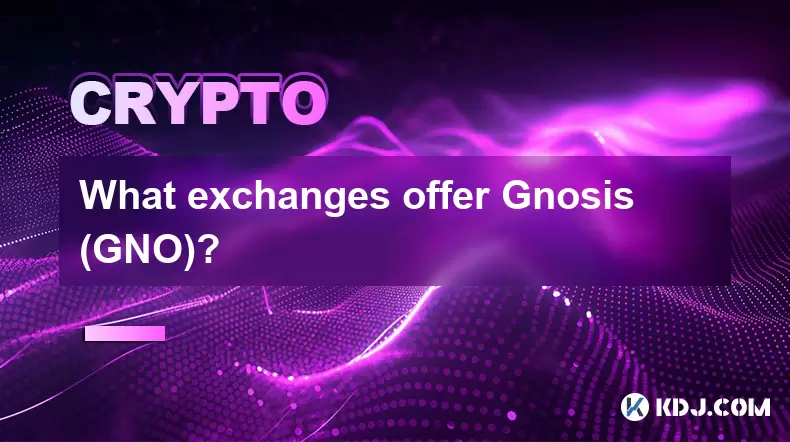-
 Bitcoin
Bitcoin $119000
-2.21% -
 Ethereum
Ethereum $4310
-0.36% -
 XRP
XRP $3.161
-3.22% -
 Tether USDt
Tether USDt $1.000
0.03% -
 BNB
BNB $812.2
-1.26% -
 Solana
Solana $176.5
-5.11% -
 USDC
USDC $1.000
0.03% -
 Dogecoin
Dogecoin $0.2260
-5.88% -
 TRON
TRON $0.3467
1.53% -
 Cardano
Cardano $0.7865
-5.01% -
 Chainlink
Chainlink $21.63
-3.31% -
 Hyperliquid
Hyperliquid $43.59
-5.84% -
 Stellar
Stellar $0.4382
-3.25% -
 Sui
Sui $3.697
-6.32% -
 Bitcoin Cash
Bitcoin Cash $596.6
3.58% -
 Hedera
Hedera $0.2495
-6.30% -
 Ethena USDe
Ethena USDe $1.001
-0.01% -
 Avalanche
Avalanche $23.16
-5.65% -
 Litecoin
Litecoin $120.0
-4.63% -
 Toncoin
Toncoin $3.389
-0.42% -
 UNUS SED LEO
UNUS SED LEO $9.014
-1.12% -
 Shiba Inu
Shiba Inu $0.00001309
-5.32% -
 Uniswap
Uniswap $11.37
0.83% -
 Polkadot
Polkadot $3.917
-5.45% -
 Cronos
Cronos $0.1680
-0.46% -
 Dai
Dai $1.000
0.01% -
 Ethena
Ethena $0.8057
-4.53% -
 Bitget Token
Bitget Token $4.423
-1.61% -
 Monero
Monero $263.2
-1.83% -
 Pepe
Pepe $0.00001133
-7.81%
Application scenarios and value of Stader (SD) coin
Leveraging Stader's platform, users can optimize staking returns, facilitate liquidity, influence governance decisions, access DeFi yield farming strategies, and manage their crypto assets effectively.
Jan 01, 2025 at 05:02 am

Key Points:
- Applications of Stader (SD) Coin
- Value Proposition of Stader (SD) Coin
- Staking Optimization through Stader
- Liquidity Provision with Stader
- Governance and Ecosystem Participation
- Decentralized Finance (DeFi) Yield Farming with Stader
- Asset Management with Stader
- Stader's Role in the Cryptocurrency Ecosystem
Comprehensive Overview: Application Scenarios and Value of Stader (SD) Coin
1. Staking Optimization
Stader offers a comprehensive solution for staking crypto assets. It enables users to participate in Proof-of-Stake (PoS) protocols and earn rewards through a simplified and optimized staking process. The platform automates key staking processes such as node selection, staking, unstaking, and rewards distribution. By using Stader, users can maximize their staking returns and minimize the risks associated with self-staking.
2. Liquidity Provision
Stader provides liquidity pools for various crypto assets, allowing users to lend or borrow tokens in a decentralized manner. These liquidity pools facilitate the seamless trading of assets and offer users the opportunity to earn passive income through interest payments. Stader's liquidity pools are characterized by low fees, high liquidity, and transparent operations.
3. Governance and Ecosystem Participation
The SD token plays a pivotal role in the governance of the Stader ecosystem. SD holders participate in decision-making processes related to platform development, protocol enhancements, and community initiatives. By actively participating in governance, SD holders have a direct say in shaping the future of Stader and aligning its trajectory with the needs of the community.
4. Decentralized Finance (DeFi) Yield Farming
Stader empowers users to access innovative DeFi yield farming strategies. Through its partnerships with leading DeFi protocols, Stader offers access to curated yield farming opportunities that allow users to generate passive income from their crypto assets. The platform automates yield farming processes, enabling users to optimize returns and diversify their portfolios with ease.
5. Asset Management
Stader serves as a holistic asset management platform for crypto assets. It provides users with advanced features for tracking, managing, and optimizing their investments. The platform offers portfolio analytics, performance insights, and alerts, giving users a comprehensive view of their financial standings. Additionally, Stader integrates with popular cryptocurrency exchanges to provide seamless asset management across multiple platforms.
Stader's Role in the Cryptocurrency Ecosystem
Stader positions itself as a key enabler of institutional adoption in the cryptocurrency ecosystem. Its robust staking, liquidity provision, governance, yield farming, and asset management capabilities cater to the unique needs of institutional investors. By providing user-friendly interfaces, automating complex processes, and offering institutional-grade security measures, Stader makes the integration of crypto assets into institutional portfolios seamless.
FAQs: Stader (SD) Coin
Q: What is the purpose of Stader?
A: Stader is a platform that enables users to stake, earn rewards, provide liquidity, participate in governance, and optimize their entire crypto asset management.
Q: What are the benefits of using Stader?
A: Using Stader streamlines and optimizes the crypto asset management process, generates passive income opportunities, and facilitates active participation in the governance of its ecosystem.
Q: What is the native token of Stader?
A: SD is the native token of the Stader platform. It plays a crucial role in governance, incentivizes participation, and captures the value generated by the ecosystem.
Q: Which PoS protocols does Stader support?
A: Stader supports staking for a wide range of PoS protocols, including Polygon, Solana, Avalanche, Fantom, and more.
Q: What are the security measures implemented by Stader?
A: Stader employs industry-leading security practices to ensure the safety of its users' assets. These measures include multi-factor authentication, SSL encryption, and rigorous smart contract audits.
Disclaimer:info@kdj.com
The information provided is not trading advice. kdj.com does not assume any responsibility for any investments made based on the information provided in this article. Cryptocurrencies are highly volatile and it is highly recommended that you invest with caution after thorough research!
If you believe that the content used on this website infringes your copyright, please contact us immediately (info@kdj.com) and we will delete it promptly.
- Dogecoin, Presale, Surge: Riding the Meme Coin Wave
- 2025-08-12 11:10:12
- Dogecoin, Tron, and the ROI Reality Check: What's a Crypto Investor to Do?
- 2025-08-12 11:15:12
- Ethereum Layer-2 Scaling Competition Heats Up as ETH Breaks $4K
- 2025-08-12 10:30:12
- China Regulation, Stablecoins, and BNB Presale: Navigating the Crypto Landscape
- 2025-08-12 11:30:12
- Meme Coins, Investment, and Token Burns: What's Hot in 2025?
- 2025-08-12 10:30:12
- China's National Security Alarm Bells Ring Over Worldcoin's Iris Scans
- 2025-08-12 11:35:12
Related knowledge

How to purchase Aragon (ANT)?
Aug 09,2025 at 11:56pm
Understanding Aragon (ANT) and Its PurposeAragon (ANT) is a decentralized governance token that powers the Aragon Network, a platform built on the Eth...

Where to trade Band Protocol (BAND)?
Aug 10,2025 at 11:36pm
Understanding the Role of Private Keys in Cryptocurrency WalletsIn the world of cryptocurrency, a private key is one of the most critical components o...

What is the most secure way to buy Ocean Protocol (OCEAN)?
Aug 10,2025 at 01:01pm
Understanding Ocean Protocol (OCEAN) and Its EcosystemOcean Protocol (OCEAN) is a decentralized data exchange platform built on blockchain technology,...

Where can I buy UMA (UMA)?
Aug 07,2025 at 06:42pm
Understanding UMA and Its Role in Decentralized FinanceUMA (Universal Market Access) is an Ethereum-based decentralized finance (DeFi) protocol design...

What exchanges offer Gnosis (GNO)?
Aug 12,2025 at 12:42pm
Overview of Gnosis (GNO) and Its Role in the Crypto EcosystemGnosis (GNO) is a decentralized prediction market platform built on the Ethereum blockcha...

How to buy Storj (STORJ) tokens?
Aug 09,2025 at 07:28am
Understanding Storj (STORJ) and Its Role in Decentralized StorageStorj is a decentralized cloud storage platform that leverages blockchain technology ...

How to purchase Aragon (ANT)?
Aug 09,2025 at 11:56pm
Understanding Aragon (ANT) and Its PurposeAragon (ANT) is a decentralized governance token that powers the Aragon Network, a platform built on the Eth...

Where to trade Band Protocol (BAND)?
Aug 10,2025 at 11:36pm
Understanding the Role of Private Keys in Cryptocurrency WalletsIn the world of cryptocurrency, a private key is one of the most critical components o...

What is the most secure way to buy Ocean Protocol (OCEAN)?
Aug 10,2025 at 01:01pm
Understanding Ocean Protocol (OCEAN) and Its EcosystemOcean Protocol (OCEAN) is a decentralized data exchange platform built on blockchain technology,...

Where can I buy UMA (UMA)?
Aug 07,2025 at 06:42pm
Understanding UMA and Its Role in Decentralized FinanceUMA (Universal Market Access) is an Ethereum-based decentralized finance (DeFi) protocol design...

What exchanges offer Gnosis (GNO)?
Aug 12,2025 at 12:42pm
Overview of Gnosis (GNO) and Its Role in the Crypto EcosystemGnosis (GNO) is a decentralized prediction market platform built on the Ethereum blockcha...

How to buy Storj (STORJ) tokens?
Aug 09,2025 at 07:28am
Understanding Storj (STORJ) and Its Role in Decentralized StorageStorj is a decentralized cloud storage platform that leverages blockchain technology ...
See all articles

























































































